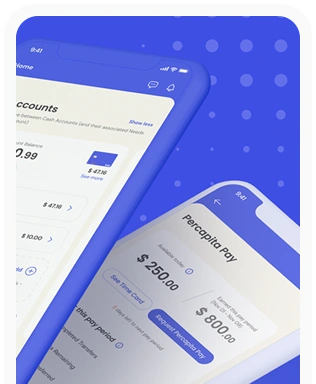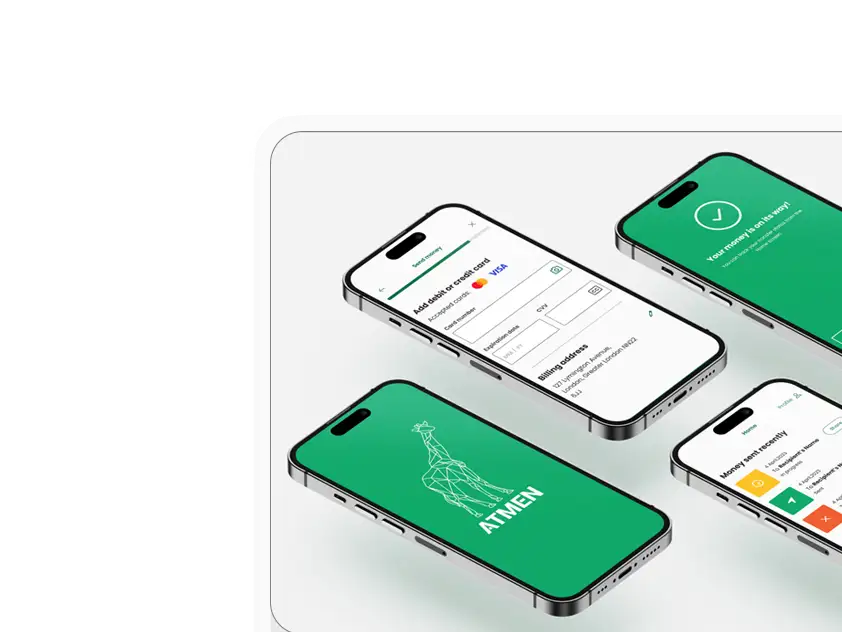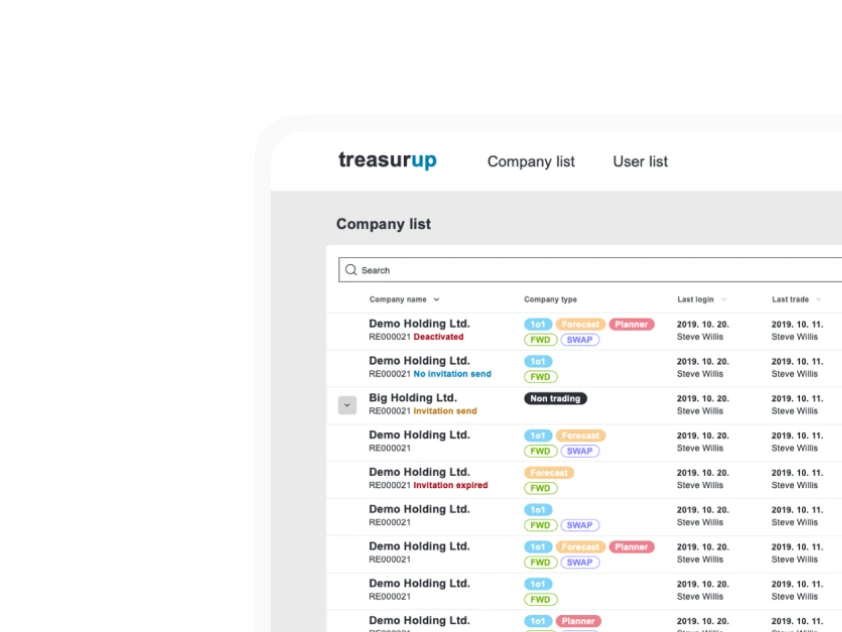Wall Street in Your Pocket: How Investment Apps Are Rewriting the Financial Market
Do you remember the days when stock market news scrolled on teletext, and investing was the privilege of a small, elite circle? That world is now a thing of the past. Technology has put global financial markets in our pockets, allowing anyone to become a shareholder in minutes. However, this democratization doesn’t just create opportunities; it also poses serious challenges for both service providers and users. At Ergomania's latest Business Breakfast, Ádám Drágus, business design consultant at Ergomania, discussed all this with Máté Pál, Head of Digital Strategy at HOLD Asset Management.
The financial world is transforming before our very eyes; the stock market is no longer defined by “men in blue shirts shouting surrounded by TVs,” as Drágus vividly recalled from his memories. Investment platforms are now accessible on mobiles with a single touch, allowing anyone, even someone unfamiliar with finance, to throw their money behind obscure companies from their phone. But has this democratization truly brought about a revolution?
Market Transformation: From Barriers to Entry to Skipped Steps
The greatest achievement of investment apps (like Lightyear, eToro, or even the investment feature within Revolut) is that the barrier to entering the market has been reduced to practically zero. While Pál used to look up Matáv and MOL stock prices on teletext for his grandfather in his childhood, today, opening an account takes less time than drinking a cup of coffee. This easy access has attracted a completely new, typically younger generation who had never considered investing before.
Despite this, paradoxically, the amount of wealth managed by digital platforms is still negligible compared to traditional financial institutions. An app like Lightyear manages around $1bn in assets under management (AUM), while HOLD Asset Management has €3bn in AUM, and behemoths like Blackrock or Fidelity measure AUM in the hundreds or even thousands of billions. According to Pál, the real breakthrough, the “big story,” is yet to come, similar to Revolut, which only became profitable a year or two ago, and not from its investment division.
This phenomenon is particularly interesting in Hungary, where, according to MNB (the central bank) statistics, the rate of stock and securities ownership among the population is one of the lowest in Europe. If we exclude government bonds, the segment that actually invests is even more minuscule. In contrast, in Scandinavia or Germany, a double-digit percentage of the population trades securities. Pál believes that the traditional European financial evolution, where one progresses through the steps of real estate, bank deposits, government bonds, and then stocks, seems to be completely upended. Members of the new generation often skip these steps and land directly in the world of the highest-risk assets, such as cryptocurrencies or trendy meme stocks (stocks that gain popularity through social media). This process, of course, is also a baptism by fire, where users learn the workings of the market with smaller stakes but much larger lessons.

Younger Generations and the Gamification Trap
Thanks to easy access, the world of investing is attracting increasingly younger demographics. Many get a taste for the game through crypto, as Drágus put it: “It's an exciting thing to speculate, invest, lose, deny it, and start over.” Pál also recalled his first eToro experience, where he turned €1,000 into exactly €1,000 in a year, dedicating countless hours and monitoring prices at night. This experience, he noted, was good for getting burned and taking a few hits, which can be necessary.
Real investing takes a lot of time; people tend to underestimate this. At HOLD, the policy is that nothing under a three-to-five-year horizon is of interest. Pál believes that anyone who claims they wouldn't have sold Bitcoin at $20,000, or that their hand wouldn't have trembled when it fell from $40,000 to $20,000, is likely not telling the truth, because 99.9% of them would have trembled and sold.
This is where the role of gamification comes in. A key to the success of modern investment apps is the deliberately crafted, gamified user experience (UX), one of the most controversial elements of these applications. Apps use confetti, “Good job!” messages, and positive reinforcement to encourage users to interact as frequently as possible. The problem is that this model often runs counter to prudent, long-term investment strategies, where patience and waiting are crucial.
Gamification doesn't only target beginners. As Pál stated, the stock market itself is a gamified industry, where the performance of professional portfolio managers is measured daily and publicly compared. The competitive spirit and measurable performance are therefore also internal drivers of the market.
Impulsive Decisions and Ethical Responsibility
According to Pál, trading apps that focus on increasing the number of interactions and generating revenue from transactions are their own worst enemy if they don't encourage clients to trade frequently. This logic, however, can steer users toward day trading, which, for most small investors, is more like gambling than conscious wealth building.
This raises the question of the platforms' ethical responsibility. While gamification makes the complex financial world attractive and understandable, it can also obscure real risks and encourage emotional, impulsive decisions. Strong EU investor protection regulations curb the most aggressive solutions, but the moral line remains thin. Pál believes the financial sector has a responsibility for transparency and moral business conduct, and a platform should only involve clients in things that are also good for them.
At the same time, he highlighted that there are counterexamples: Wise built its marketing on transparency and exposing the hidden costs of banks, which shows that responsible business conduct can also be attractive in the market.
Social Media and Meme Stocks: New Market Dynamics
In recent years, the investment market has also been shaped by entirely new dynamics, thanks to the rise of social media and the influence of influencers. Pál noted that due to information overload – especially since the advent of ChatGPT – it's difficult to decide whom to listen to. Financial information and influencers on TikTok or Instagram can also inspire users.
A good example of this is the GameStop story, which Pál described. Small American investors, organizing on social media, began buying up shares of a near-bankrupt company en masse, thereby artificially inflating the price. Once the price peaked, the original instigators sold their shares, and the investors who got in late suffered significant losses as the price collapsed. Similarly, in the case of Nvidia, those who got in early made a lot of money. These examples illustrate how social-media-influenced, highly speculative investments can move stock prices in real time, faster than ever before.
It's important to distinguish between apps that encourage trading and those that support passive investing. Pál pointed out that trading apps are designed to increase the number of interactions and generate revenue from transactions, thereby encouraging fast, active trading. In contrast, there are also service-oriented apps that want low intensity from their clients. As an example, he mentioned that Robinhood has already introduced asset management where, for a fee, real, live portfolio managers provide services alongside the app.
This move shows that platforms are also responding to clients looking for a ready-made model or service, because they have neither the time nor the inclination to actively manage their investments. These more passive investment options, where decisions are made by experts or algorithms (robo-advisory), offer a more stable, long-term investment behavior, providing an alternative to short-term, speculative movements.
Regulatory Challenges and the Value of Human Presence
EU regulation is strong in protecting investors, but administrative burdens vary by country, which slows innovation. According to Pál, the regulation itself is important, but the administrative burden of compliance is a critical issue. To clarify, for a single matter with a country's national bank, one document might be needed, while in another, it could be as many as 14. Investors’ money is protected by several players – e.g. the custodian, KELER (the central securities depository) – minimizing the risk of theft. The EU has a passporting procedure that allows a company licensed in one EU country (e.g., Revolut, registered in Lithuania) to provide services in other member states.
However, depending on the complexity of the service, local regulations come into play, such as different methods for opening an account. Know Your Customer (KYC) and Anti-Money Laundering (AML) protocols are necessary evils for financial companies, ensuring that invested money does not come from illegal activities. The crypto world is also moving in this direction: with the MiCA regulation, it is stepping from the “very black” towards the “gray,” and in Western Europe, such as on the German stock exchange, crypto is now commonplace.

Loyalty Beyond Transactions: Trust and the Real Customer Experience
According to Pál, the real difference between platforms is customer experience. In the case of traditional banks, loyalty is often passed down from generation to generation (“Dad takes you in, holds your hand, and says, ‘I'd like to open a junior account for Ádám’”). In contrast, with investment apps, loyalty is zero. Pál's apt analogy is that these platforms are like telephone companies: the user isn't really interested in the provider, but in being able to talk to their mother. Similarly, an investor is not tied to XTB or Revolut, but to the Microsoft shares they own. Furthermore, poor customer service, as seen with N26, where users’ accounts were frozen and support was unresponsive, can quickly deter users. In the absence of such bad experiences, users can easily switch after a single disappointment.
Real commitment can be created through human relationships: for example, the personally written letters sent every few weeks by the former CEO of HOLD Asset Management to clients, opened by 70% of them and received positively, are a prime example. People appreciate that “It's not written by AI, and the person is really behind it.” According to Pál, this type of personal connection is what can truly differentiate service providers in the market. He pointed out that the majority of clients are looking for a ready-made model portfolio or a full-service solution, so they consciously avoid platforms that require too much time and active management from them.
This competition without loyalty leads to a UX problem, a point one of the event participants also raised. Brokers cram so many features (stocks, crypto, savings) into their apps that the result is a “Swiss Army knife”: a user interface (UI) that has everything but excels at nothing. The loss of focus can easily come at the expense of usability.
The Future of AI and the Re-evaluation of the Human Factor
In the future, according to Pál, AI will make a huge impact on automating internal operations, such as back-office processes, allowing fewer employees to serve more clients. However, its effect on clients’ investment decisions may be more limited; if everyone were to ask the same AI models, it could lead to everyone choosing the same thing, and the “five wise men” would also give similar tips.
A specific data point shared by Pál shows how different the user bases and investment habits are. While an average Robinhood user invests around $5,000 at the age of 30-31, an average client at the more traditional Interactive Brokers has assets between $100,000 and $200,000 at the age of 45. This highlights that the revolution has, for now, primarily mobilized the market for smaller sums.
Pál sees two main trends for the coming years. The first is that in the future, clients will be willing to pay for genuine, personal advice and direct human connection, which can be the most effective tool for building brand loyalty in the digital noise. After the failure of impersonal chatbot-based wealth management experiments in the early 2020s, clients will increasingly appreciate authentic, human expertise.
A kind of “brutalization,” or a powerful consolidation process, is expected in the market, during which larger institutions will acquire smaller, specialized players. Since one of the biggest challenges for financial companies is the distribution of their products to the target audience, most acquisitions and partnership agreements are expected in this area. The other defining trend is thus "productization" (ETF-ization). This means that various investment opportunities will be packaged into uniform, easily tradable forms on the stock exchange (e.g., ETFs or tokens), which will further increase market transparency and accessibility.
In conclusion, the first, technology-driven phase of the investment app revolution has come to an end. The next chapter will be about building sustainable business models. While technology democratizes access to an unprecedented degree and AI works in the background, the key to success is no longer just a sleek interface or gamification. True value creation lies in awareness, long-term thinking, and building human trust. The winners in the market will be those who see the person behind the transactions in the “confetti apps” and combine an outstanding customer experience with human expertise and responsible operation to build long-term, value-based relationships.
Listen to the full converstation:









